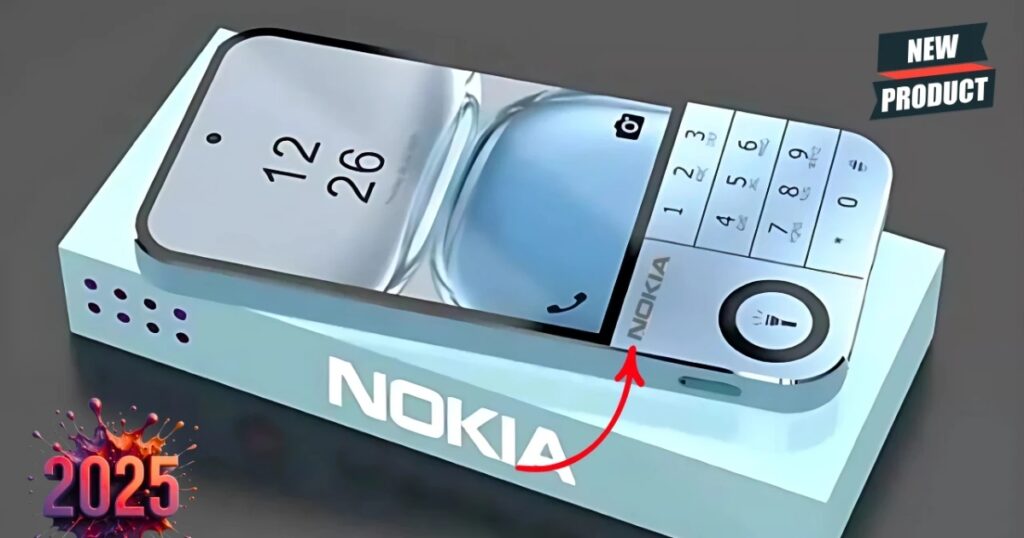1100 Nokia: In the rapidly changing world of mobile technology, very few devices have achieved the legendary status of the Nokia 1100. Launched in 2003, this modest handset became much more than another entry in Nokia’s lineup—it went on to become the best-selling mobile phone of all time, with more than 250 million units sold worldwide. Its success was a direct result of simplicity, affordability, and unmatched reliability.
When people think back to the early 2000s, the Nokia 1100 instantly comes to mind—its sturdy design, the iconic keypad, and the unforgettable Nokia ringtone that echoed from nearly every pocket. But what exactly made this phone such a global phenomenon at a time when the mobile market was already filling with advanced devices? Let’s explore the full story of the Nokia 1100, from concept to cultural icon.
Nokia 1100 History: From Idea to Global Icon
The journey of the Nokia 1100 began on August 27, 2003, with a simultaneous launch in Moscow, Russia, and New Delhi, India. This wasn’t accidental—Nokia strategically targeted emerging markets where mobile adoption was rapidly gaining momentum.
Internally codenamed “Penny”, the phone was built with a single purpose: to provide an affordable, durable, and easy-to-use device for the masses. At a time when mobile phones were transitioning from luxury items to everyday essentials, Nokia saw an opportunity to reach millions who had never owned a mobile before.
Priced at under $50, the Nokia 1100 was intentionally kept accessible. For many families across Asia, Africa, and Latin America, this wasn’t just their first phone—it was their first step into the digital age.
Nokia 1100 Specifications: Simple Yet Purposeful
By today’s standards, the Nokia 1100 specs may seem primitive, but in 2003 they were exactly what users needed: reliable communication without complications.
Key Nokia 1100 specifications included:
-
Monochrome display (96 × 65 pixels) visible in sunlight
-
GSM connectivity (900/1800 MHz global, 850/1900 MHz US)
-
850 mAh Li-Ion battery with up to 400 hours standby
-
Compact size: 106 × 46 × 20 mm, weight 86g
-
Phonebook storage: 50 contacts
-
Support for SMS and picture messaging
It had no internet, no camera, and no apps—but it did what it was meant to do: make calls and send texts with unmatched reliability.
Nokia 1100 Features That Made It Special
Despite its simplicity, the Nokia 1100 packed clever features that made it stand out:
-
Built-in flashlight (activated with the “C” key), extremely useful in areas with power outages
-
Dustproof keypad and non-slip sides, making it perfect for tough environments
-
Pre-installed games like Snake II and Space Impact+, which kept millions entertained
-
Monophonic ringtones and composer, allowing users to create custom tunes
-
Changeable covers, giving the phone a personal touch
-
Vibration alerts for discreet notifications
And, of course, its legendary battery life—lasting days or even weeks on a single charge. This was crucial in areas with limited electricity access.
Nokia 1100 Durability: The “Indestructible” Phone
The Nokia 1100 became legendary not just for its price or battery, but for its indestructibility. Stories still circulate of the phone surviving falls, water exposure, and even being run over by vehicles. Unlike today’s fragile smartphones, the 1100 was built tough:
-
High-quality plastic casing to absorb shocks
-
A recessed screen for added protection
-
Fewer fragile components in its internal design
-
Dustproof and water-resistant properties
For many, this was the phone that simply wouldn’t die. Its resilience became a cultural joke, but it was also a practical advantage in rural areas and harsh environments.
Nokia 1100: Best-Selling Mobile Phone of All Time
From 2003 to 2009, the Nokia 1100 sold over 250 million units, making it the best-selling mobile phone in history. To put this into perspective, even Apple’s iPhone 6/6 Plus series sold fewer units at around 222 million.
The success of the 1100 came down to:
-
Perfect timing: Launched as mobile adoption was exploding
-
Affordable pricing: Making mobile phones accessible to millions
-
Practical features: Flashlight, games, dustproof design
-
Durability: Phones lasted for years, creating loyal users
-
Nokia’s strong brand trust
By 2005, Nokia commanded 32% of the global mobile market, with the 1100 as one of its strongest drivers.
Cultural Impact Around the World
Beyond numbers, the Nokia 1100 shaped cultures and communities. In developing nations, it wasn’t just a phone—it was a lifeline.
-
Small businesses used it for coordinating with suppliers.
-
Families stayed connected across cities and countries.
-
Farmers accessed weather updates and market prices via SMS.
For millions, it represented progress and empowerment.
In pop culture, it became a symbol of a simpler time—before the dominance of complex, expensive smartphones. The nostalgic charm of the Nokia 1100 lives on, often remembered for its Snake game and its “indestructible” reputation.
Legacy of the Nokia 1100
The lessons from the Nokia 1100 continue to influence modern phone design:
-
Battery life matters—users still crave long-lasting devices.
-
Durability counts—rugged phones still draw inspiration from its toughness.
-
Practical features over gimmicks—useful tools like flashlights proved their worth.
-
Simplicity drives adoption—an intuitive interface makes technology accessible.
-
Market-specific design works—tailoring to regional needs can create massive success.
Even in today’s world of $1000+ smartphones, many still admire the “less is more” philosophy that made the Nokia 1100 legendary.
Conclusion: A Humble Phone That Changed the World
The story of the Nokia 1100 is not just about record-breaking sales—it’s about how a simple, affordable, and durable device transformed global communication.
It gave millions their first taste of digital connectivity, built a reputation for indestructibility, and became a symbol of reliability in an era of rapid technological change.
In 2025, as we look at foldables, 5G, and AI-powered smartphones, the Nokia 1100 reminds us of an important truth: sometimes, simplicity is the greatest innovation of all.
